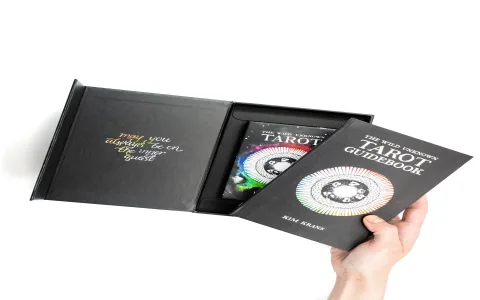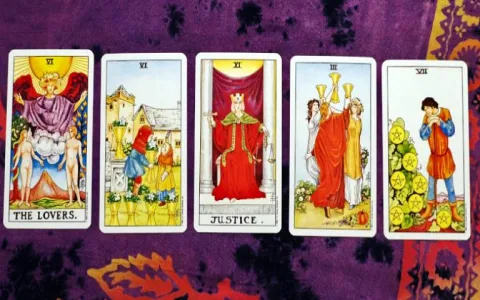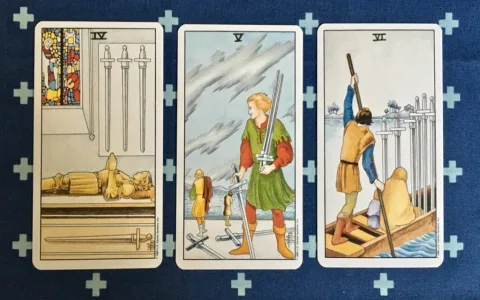You know, for years, I wasted so much time with Tarot. Seriously, I just threw questions at the cards like, “Will I get that promotion?” or “Is he the one?” And guess what? The answers were always fuzzy, useless, and felt like they could apply to literally anyone. It took me hitting a complete wall to figure out that the tool isn’t broken—my entire approach was screwed up.
I only started getting real, tangible results for self-improvement once I stopped asking predictive questions and started asking strategic ones. I had to learn how to structure the conversation with the Universe, demanding actionable intel instead of vague fortunes.
The Mess That Forced the Change
How did I figure this out? Because about two years ago, I hit absolute zero. I walked away from a stable job because I was convinced I was going to launch this killer side business. I had saved up enough to coast for six months. Six months turned into nine, nine turned into twelve. I was sitting at home, watching my savings account shrink faster than a balloon in a freezer, and the business wasn’t just stalling; it was reversing. I felt paralyzed.
I kept turning to the cards, pulling a daily draw, hoping for a sign that the money pit would end. The cards would say things like “Patience” (Hanged Man) or “New Beginnings” (The Fool). Great. Tell that to the electricity bill.
I realized that the standard Tarot advice—”ask open-ended questions”—was still too passive. I needed to know the mechanism of my failure. I didn’t need to know if I’d succeed; I needed to know what specific mental blockage was making me procrastinate on cold calls.
The moment everything shifted was when I was staring at the deck, feeling pure panic, and I threw my old routine out the window. I didn’t ask about the future; I demanded an immediate diagnostic report on my personality and habits. I spent a whole week structuring questions that were clinical, specific, and focused only on internal barriers. That process, born out of pure financial terror, is what created my “Top 10” framework.
Structuring the Self-Improvement Diagnostic
My entire practice now revolves around these ten structural points. I don’t just ask the question; I define the objective (Objective, Blockage, Strategy) before I even shuffle. This isn’t a list of vague prompts; it’s a systematic approach to tearing down limiting beliefs and building a better strategy.
I started small. I’d pull three cards per question: one for the root cause, one for the current manifestation, and one for the required action. I then documented the card’s traditional meaning, my intuitive read, and then the concrete, real-world task I committed to doing that day based on the action card. It was brutal, but it worked.
Here are the types of effective, tactical questions I designed and used to pull myself out of that financial hole and career panic:
- For Identifying the Root Problem: “What unconscious belief is actively sabotaging my efforts to maintain consistent motivation?” (This targets my stuff, not outside factors.)
- For Behavioral Audit: “Where am I currently wasting the most emotional energy, and how can I redirect it into a productive channel?” (This forces me to look at habits I usually ignore.)
- For Communication: “What internal fear am I projecting onto others that is causing friction in my key professional relationships?” (Focuses on my contribution to the mess.)
- For Goal Setting: “If I only focus on one limiting habit this month, which one would yield the biggest positive chain reaction?” (Prioritization, demanding a single, strong focus point.)
- For Creativity/Flow: “What aspect of my routine is currently suppressing my natural enthusiasm, and how can I reintroduce playful structure?” (Addressing burnout proactively.)
- For Relationship Dynamics (Self focus): “What lesson about self-respect am I currently avoiding that needs immediate confrontation?” (Keeps the focus entirely on the self, avoiding the ‘what is he doing’ trap.)
- For Resource Management (Time/Energy): “What single commitment can I successfully drop today to free up 20% of my mental capacity for high-value tasks?” (Specific, actionable pruning.)
- For Handling Fear: “What is the true, practical consequence of the failure I currently fear, and what immediate micro-step can mitigate that fear?” (Breaks down the monster under the bed.)
- For Authenticity: “In what way am I compromising my core values simply to maintain comfort or approval?” (A hard truth bomb.)
- For Future Strategy: “What foundational skill or piece of knowledge must I acquire next that will create the most stable foundation for my long-term vision?” (A concrete learning path, not just ‘prosperity.’)
By forcing the questions to be about internal mechanics—my blocks, my actions, my required changes—the cards stopped giving me cryptic poetry and started delivering blunt, actionable advice.
The Outcome of the Structured Practice
I executed on the tasks the cards gave me. The structure of that rigorous self-examination didn’t just save my business; it completely rebuilt my approach to life. I realized the reason I failed before wasn’t lack of luck, it was poor discipline and a constant need for external validation.
When I finally got back on my feet, it wasn’t because the cards predicted success. It was because the cards forced me to create a detailed blueprint of the person I needed to become to stop screwing up. If you’re serious about self-improvement using Tarot, stop asking if things will happen. Start asking what specific, ugly part of yourself you need to drag into the light and fix today.
I still pull daily cards, but now, the first thing I do is grab my notebook and write down the objective: Identify the blockage. Implement the strategy. Document the result. That discipline is the real magic trick, not the pictures on the cardboard.






